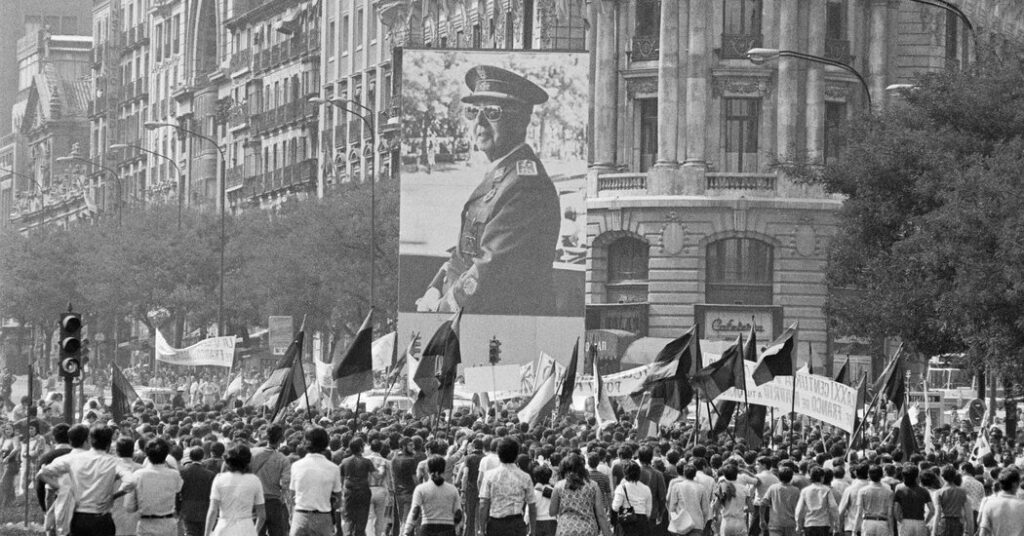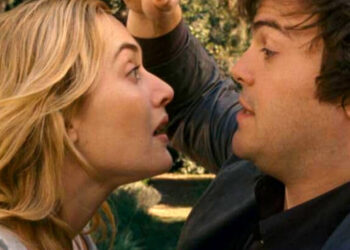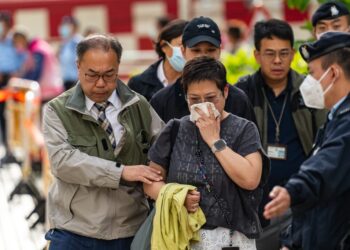My grandfather turned 100 this month. A portrait of his father as a child hangs in the dining room of his home in a small town in the Valencia region of Spain. My great-grandfather’s name was Paco, like me. This first Paco was an electrician, and a town councilman during the final years of the Spanish Republic.
In the spring of 1939, at the end of the Spanish Civil War, the victorious fascist authorities arrested and imprisoned him. Four years later he was executed by firing squad against a cemetery wall. His crime was continued commitment to the Republic. Every time I look at that painting in my grandfather’s home I see beyond my great-grandfather, to the terrible legacy of the dictatorship. It is a legacy not only of political murders, like his, but also of the silence my grandfather felt compelled to keep in the years that followed.
This November marks 50 years since the death of Generalissimo Francisco Franco, the caudillo who ruled Spain from 1939 to 1975. Prime Minister Pedro Sánchez’s leftist government has spent the year commemorating the anniversary with conferences, exhibitions and cultural activities under the slogan “Spain in Freedom,” a celebration of how democratic Spain flourished after Franco’s oppressive rule. This commemoration is far from universally embraced. The Spanish conservative and far-right parties — the Partido Popular and Vox — have largely refused to participate.
The fear that our past will divide us has returned. Franco, in death, lingers on, a ghost that haunts the living of Spain. In forgetting his reign of terror and sanitizing his memory, we risk trivializing authoritarianism and weakening democracy.
In 1975, after Franco’s death, Spain’s transition to democracy was ushered in with the Pact of Forgetting, a decision made by Spanish elites and agreed to by much of society to overlook the civil war and Franco’s 36-year dictatorship. We decided to bury our past.
In Italy, a postwar antifascist culture focused on condemnation of Benito Mussolini and the exaltation of the Resistance, which together served as the founding narrative of Italian democracy after World War II.
In Germany, historical repentance for the crimes of the Third Reich gave rise to Vergangenheitsbewältigung, a term meaning “facing the past” or “coming to terms with the past.” Rejection of Nazism, Hitler and the industrial terror machinery was foundational to the creation of modern Germany.
To be sure, nearly 80 years on, the clarity of postwar antifascism has been muddied by the rise of populism and Giorgia Meloni’s ascendancy in Italy, and the rise of the far-right Alternative for Germany (AfD). But in the aftermath of the war, by and large, there were few public excuses made for Hitler or fascism.
Spain emerged from fascism 30 years after the Axis powers were defeated. At the time, we didn’t reject fascism. We simply erased it. There were no Nuremberg trials, no truth and reconciliation tribunals. That erasure came not only because Franco, unlike his contemporaries, died in his own bed; it was also because Spain never had an antifascist culture that glorified the memory of exile of the Spanish Republicans who fled during and after the civil war. There was no celebration of Republican civic culture, nor was there a widespread embrace of — let alone apology to — the victims of Franco’s repression.
In the years since the birth of our present democracy, there has never really been a desire to openly confront the past. Worse, schools have failed to establish a collective memory among young people. The result has been a great void.
That collective memory is getting harder to create because there are increasingly few people left alive able to link us to a direct, shared memory of the war. This is a country of nearly 49 million people; diminishing numbers still living today were over 10 years old during the Civil War, and the majority of us — some 28 million — were born after 1975. We did not even live under the dictatorship, let alone remember it.
Our demographic reality, with so many people born after Franco’s death, is significant for understanding two alarming trends: According to recent polls conducted for the newspaper El País, 30.6 percent of Spaniards under 24 support Vox, the far-right party. Even more disturbing, one in four young Spanish men would prefer authoritarianism to democracy “in some circumstances.”
Franco instead is defined for young people by YouTube, X and TikTok. Influencers earnestly, if erroneously, regale their audiences with bromides about his purported generosity, his love for Spain and the Spanish people. They insist he brought the country great fortune and prosperity.
For too many young people, Franco is a counter to so-called woke culture. When fascism is dissent, the world is upside down. A symbol of rebellion against political correctness. A new kind of punk.
In 2019 Franco’s body was removed from the Valley of the Fallen, the grandiose mausoleum that the dictator built for his own glorification using political prisoners as laborers. There he lay for decades, alongside the remains of 33,000 combatants killed in the war, making it the largest mass grave in Spain — a dubious honor in a country known for its mass graves. Our ground is filled with the ancestors of countrymen who never received justice.
His body was reinterred in a family crypt, part of a public cemetery in Madrid. His spirit, which has poisoned Spanish public life for almost a century, must also be replaced in democratic memory. We must begin to explain — without hatred or nostalgia or the pursuit of revenge — how all those horrors, silenced by oblivion, were possible.
For many years now, human rights activists have lobbied for a Truth Commission in Spain. This year there was progress, with the creation of a Democratic Memory Council to document human rights violations during the Civil War and the dictatorship through the gathering of testimonies and documents that will hopefully lead to reparation for victims. It’s an important step.
But there is so much left to be done; more than 11,000 victims of repression remain buried in mass graves and need to be recovered. We must officially recognize the places where these horrors took place — the execution walls, the former prisons for political prisoners — the all but forgotten vestiges of the dictatorship. We need to improve access to archives from the long era of censorship and abuses.
Above all, we must outline an educational curriculum to teach young people about both Franco and the terror of Francoism. It is the only way to challenge the power of deceitful social media.
Even today, my grandfather avoids any mention of his father’s terrible murder because remembering the past means awakening the trauma. But I know the details: how he was held in cell 518; where and when the final shot was taken. I know about the marble cross in the cemetery in the small town of Paterna, a place where 2,238 people were murdered by Franco’s forces after the war.
Franco is not past. Franco is present. And he will continue to be as long as we Spaniards do not come together to bury him.
Paco Cerdà is a journalist and writer. His book “The Pawn,” a nonfiction novel about anti-Francoism and the Cold War, was published in English in June. This article was translated from the Spanish by Cristina De La Torre.
The Times is committed to publishing a diversity of letters to the editor. We’d like to hear what you think about this or any of our articles. Here are some tips. And here’s our email: [email protected].
Follow the New York Times Opinion section on Facebook, Instagram, TikTok, Bluesky, WhatsApp and Threads.
The post It Is Time to Bury Franco’s Ghost appeared first on New York Times.




